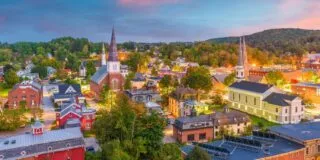Officially nicknamed the “Palmetto State,” South Carolina was the 8th state to join the United States of America on May 23, 1788.
It has a population of 5,148,714 (as of 2019), making it the 23rd most populous state. South Carolina is bordered by the states of North Carolina and Georgia.
With a total of 32,020 square miles (82,932 square kilometers) of land and water, it is the 40th largest state.
The capital of South Carolina is Columbia, located in the state’s center.
That’s enough fast facts about the Palmetto State; let’s jump on the 15 sharp facts about South Carolina!
People have been living in South Carolina for at least 10,000 years!

It’s commonly believed that North America was first populated by a group of people we call the Paleo-Indians sometime around 13,000 BC.
As most theories go, they came into North America via a land bridge at the Bering Strait from the far east of modern-day Russia.
They then spread out and populated the Americas as they sought better hunting grounds and an easier way of life.
By around 8,000 BC, the region we now know as South Carolina had been populated by Paleo-Indians, who primarily lived a nomadic lifestyle.
By 1,000 BC, these people had developed more complex social structures and began to live, at least semi-permanently, in villages and lived partly off crops they grew.
At least twenty-nine different nations or tribes of Native Americans lived in South Carolina when Europeans first arrived.

Over time, more people settled in the region we now call South Carolina. When Europeans first settled the region in the 16th century, several diverse tribes had sprung up, numbering at least 29.
There were likely more than this number, but unfortunately, due to European diseases and conflicts that arose during North America’s colonization, tribes often disappeared entirely or were absorbed by other tribes.
Of the 29 we know of, they spoke five different languages: Yuchi/Uchean, Siouan, Muskogean, Iroquoian, and Algonquian.
Some of these tribes still lived at least a semi-nomadic life, while others had developed villages and agricultural systems and lived in one location year-round.
The first Europeans to reach South Carolina were Spanish.

At the beginning of the 16th century, sometime between August 1514 and December 1516, an expedition led by the Spaniard Pedro de Salazar landed on the shores of the modern-day Carolinas between Cape Fear and Georgia.
Salazar did not scope out the land; instead, he enslaved as many as 500 Native Americans and brought them back to the Dominican Republic, then a part of New Spain.
The following contact that the Native Americans of South Carolina had with Europeans had the same result, with another Spanish expedition passing by in 1521 and enslaving 60 more Native Americans.
The first European settlement in South Carolina was also Spanish.

The Spanish attempted to colonize South Carolina long before the British.
The first attempt by the Spanish was led by the Spanish explorer Lucas Vázquez de Ayllón in 1526.
He aimed to establish a settlement in Winyah Bay, South Carolina, but after finding conditions unfavorable, the colony was moved to modern-day Georgia.
The French first attempted to colonize the region in 1562 and held a fort called Charlesfort in Port Royal Sound for a brief period.
In 1566, the Spanish captured the fort and controlled it until 1587.
Britain only made moves to colonize the region much later. In 1670, the first attempt by the British saw a settlement they called Albemarle Point grow on the west banks of the Ashley River.
Within ten years, the settlement was moved to a more favorable location nearby, where the city of Charleston stands today.
Slavery was central in the founding of South Carolina.

Starting from the first ship, which sailed into South Carolina and enslaved 500 Native Americans through to the end of the American Civil War, the region we now call South Carolina has a long and bleak history of slavery.
At first, Native Americans were captured and traded for enslaved Africans, as the latter didn’t know the territory and, as such, were more submissive.
By 1708, there were more enslaved Africans than white settlers in South Carolina, as the region’s plantation-based economy relied entirely upon slave labor.
South Carolina was a driving force behind the American Revolution.

That being said, the colony was far from unified on the issues that led to the American Revolution.
On the one hand, many colonists were enraged by ever-increasing taxes without representation. On the other, much of South Carolinas trade was with Great Britain.
As such, the colony was divided almost 50/50 between Loyalists and Patriots.
By the war’s end, about a third of the Revolution’s battles were fought more in South Carolina than in any other of the colonies.
Much of these battles were fought between South Carolina Patriots and the Loyalists, whose forces were often bolstered by their allies, the Cherokee Nation.
South Carolina was also the first state to secede from the United States of America.

The abolition of slavery was a hot topic in the 19th century, but South Carolina wasn’t having any of it.
By this point, the vast majority of the population was made up of enslaved African Americans.
White South Carolinians feared that if the African American population were freed, they would change the shape of the state’s future.
They also still relied almost exclusively on slave labor, and such an act would destroy their financial prospects.
When Abraham Lincoln was elected in 1860, South Carolina was the first to react and seceded from the Union in December 1860.
On February 8, 1861, South Carolina joined the other six states and formed the Confederate States of America.
South Carolina’s official state tree played an important role in the state’s history.
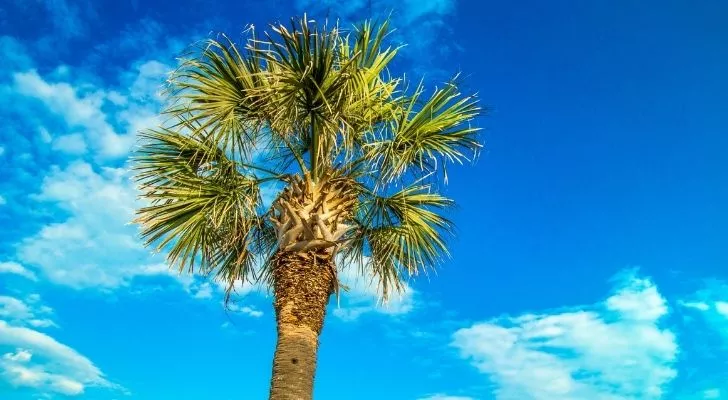
South Carolina’s official state tree, the palmetto tree, became a symbol of South Carolina way back during the American Revolution.
In 1776, the construction of Fort Moultrie (formerly Fort Sullivan) began on Sullivan’s Island, a location perfect for protecting Charleston from invading Patriots of British forces.
The fort was constructed primarily of logs from the palmetto tree, a smaller variant of the standard palm tree.
When the British attacked in June 1776, they found it almost impossible to destroy the fort’s walls, even by sailing past and bombarding it with volleys of cannonballs.
It turns out that because the palmetto logs are pretty soft, they absorbed the forces of the cannonballs instead of shattering when struck as most wood would.
From this point onward, the palmetto gained an exceptional reputation in South Carolina, eventually becoming the official state tree and giving the state the nickname the “Palmetto State!”
South Carolina was once called “The Iodine State.”
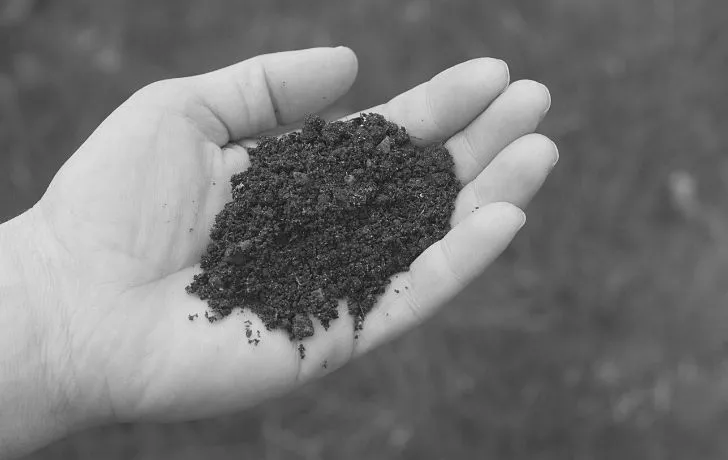
While South Carolina has long been called the Palmetto State, it’s certainly not the only moniker it has received over the ages.
In the 1920s and ’30s, a new nickname, The Iodine State, emerged.
Farmers, especially in the coastal regions, started spreading the word that crops from their farms were much higher in iodine than usually found.
These days, most people get their iodine from table salt, but back then, many people were found not to get enough of it, leading to severe malnutrition.
From 1930 to 1933, South Carolina license plates even had a new nickname on them, but this didn’t last long.
The main reason is that iodized salt became popular and commonly available, but it’s also likely that enthusiasm for the nickname waned because it is pretty unremarkable.
There’s only one place where tea is grown commercially in the US, and that’s in South Carolina!
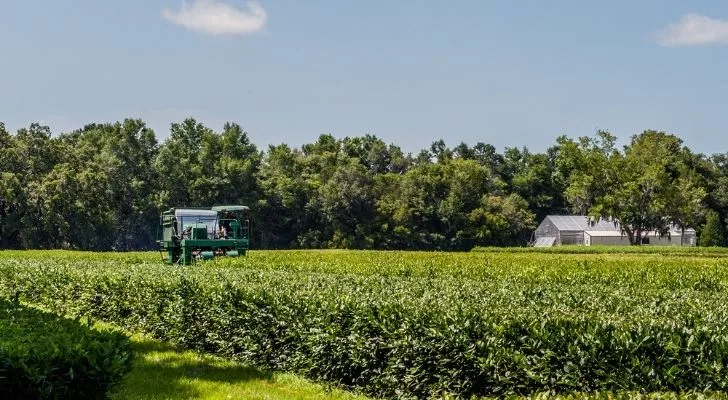
South Carolina’s plantation days may be over, but there’s still one plantation left.
Albeit, this plantation is quite different from the infamous plantations of yore as it’s a commercial tea plantation.
It wasn’t always one, though. In 1963, the Lipton tea company purchased a plot of land on Wadmalaw Island, SC, to be used as a research farm to tweak and perfect their tea crops.
Later in 1987, the land was sold to William Hall, a third-generation trained tea taster, who has since turned it into the US’ only commercial tea plantation.
South Carolina is home to the largest living cat in the world.

The cat isn’t just any cat, but a liger (a lion crossed with a tiger).
He weighs an incredible 922 pounds (418.2 kg), stands 49 inches (1.25 m) tall, and measures some 131 inches long (3.33 m) long!
This gigantic liger is known as Hercules, which couldn’t really be a more fitting name when you think about it.
Every day Hercules is fed about 30 pounds (13.6 kg) of raw meat, which happens to be about the same weight as a small child.
South Carolina has its very own UFO welcome center.
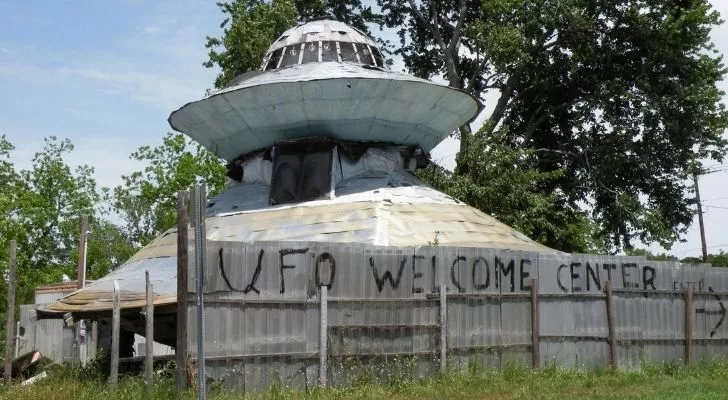
The welcome center is somewhat unofficial, to say the least.
In 1994, local UFO enthusiast Joseph Pendarvis began constructing the UFO welcome center in the sleepy little town of Bowman, South Carolina.
Initially, the structure was meant to be some extra space outside of Pendarvis’ trailer in which he could work in, but over time it grew into something far greater.
These days, the UFO welcome center appears like two rather ramshackle UFOs stacked on top of each other.
Like any good welcome center, it has a guestbook for you to sign into when visiting, a toilet, air conditioning, and a few other basic amenities.
The Loch Ness Monster’s cousin lives in South Carolina.

Scotland has the sea monster Nessie, and South Carolina has the lake monster Messie, which lives in Lake Murray near the town of Irmo.
It’s apparently been sighted many times since 1933.
Messie is often reported to look like some serpent, measuring between 40 to 60 feet (12 to18 m) long.
A marine biologist who visited claimed that he had spoken with as many as 12 people who claimed that they had seen the lake monster, and apparently, all of these people were not intoxicated at the time.
South Carolina produces more peaches than the peach state.

It’s a fact that many South Carolinians are often more than happy to flaunt in the face of their southern neighbors, Georgia, the so-called “Peach State.”
The reality is that South Carolina is actually the second-largest producer of peaches in the country, losing out only to California.
To add insult to injury to Georgia, South Carolina is often referred to as the “Tastier Peach State!”
South Carolina produces an average of 60,000 tons (54,431 tonnes) of peaches annually!
There’s a button museum in South Carolina, and it’s everything you never knew you wanted.
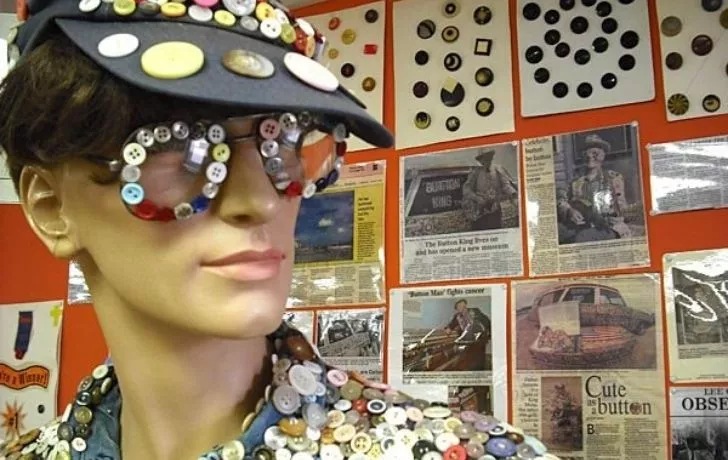
As far as strange roadside attractions or museums go, Dalton Stevens’ Button Museum outside of Bishopville is rather impressive.
It all started in 1983 when Dalton Stevens’ insomnia reached a new level, driving him a bit nutty.
To combat this, he had to find anything to do with his hands when he couldn’t sleep.
For some reason, the activity that Stevens landed upon was sewing buttons onto things.
Over the next two years, Stevens sewed an impressive 16,000 buttons onto a suit.
It wasn’t long until he was locally famous for his crafty insomnia sessions, which led him to open his Button Museum.
Until his passing in 2016, Stevens attached buttons to an incredible variety of objects, most impressively, an entire hearse!
While South Carolina is another southern state, there’s so much more to it than that.
Sure, like many US states, there’s a rather dark period of history, but things are improving!
Meanwhile, the state itself is absolutely beautiful, warm, and welcoming.
South Carolina has something for everyone, whether you’re a fan of beaches, golf courses, or even bizarre roadside attractions!








